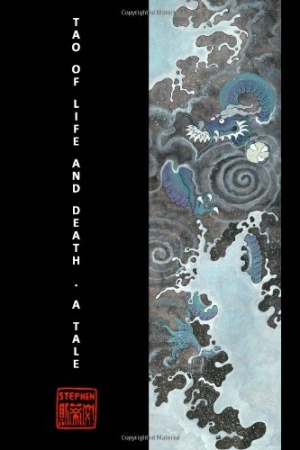
Tao of Life and Death
A Tale
The Chinese word tao is usually translated as “way,” which seems simple and straightforward enough, until one investigates the wider implications of the term. Stephen McDonough’s marvelous book, Tao of Life and Death – A Tale, operates in much the same way—enjoyable at face value, but also full of deeper meaning.
On the surface, the book operates as a supernatural morality tale in which a few imperfect but sympathetic characters look to redeem themselves by righting the wrongs they have committed. In this respect, the book is a suspenseful page-turner, as readers are introduced to Gnarled Pine, Zhong Kui, and Happy Willow and wonder which, if any of them, will arrive at their geographical and metaphysical destinations intact. However, Tao of Life and Death is also a book that anyone interested in Taoism, Confucianism, or Zen Buddhism could spend hours picking apart, contemplating the teachings revealed in the story.
McDonough is not only a writer but also an accomplished artist, and he brings his skills to bear on Tao of Life and Death. The result is a beautiful set of interior illustrations—original paintings by McDonough depicting the main characters and settings in the story.
Throughout the book, some characters, rooted to the common desires of men, speak in prose, while others, showing enlightenment as they dispense wisdom, speak in verse: “Whether a good man acts bad or a bad man acts good, / Heaven judges blindly, as it should.” But McDonough’s most novel passages are a sort of narrative rhyme that carries much of the action, as when Zhong Kui prepares to take an important civil service examination: “‘Silence!’ the head official yelled. The room hushed as noise fell. Paper, ink, and calligraphy brushes were distributed to the men. They all felt anxious for the exam to finally begin.”
Writing whole chapters in rhyming prose does, perhaps by necessity, lead to a tortured rhyme here or there, with syllables added or subtracted to preserve the rhythm. But on the whole, it proves not just an interesting novelty but also a highly effective storytelling technique. Along with bold choices like these, McDonough even includes himself in the story as a key character in the final section, delivering a satisfying and thought-provoking conclusion.
McDonough’s combination of distinct voices, memorable characters, and innovative presentation evokes ancient Chinese folktales, and the careful use of so many different kinds of storytelling—verse, visual, and narrative—helps to immerse the reader in the world McDonough has created. Readers interested in Chinese culture or fine art should seek out Tao of Life and Death (preferably the full color version, to better appreciate the illustrations), and hope that as McDonough follows his own tao, he graces us with more books like this one.
Reviewed by
Peter Dabbene
Disclosure: This article is not an endorsement, but a review. The publisher of this book provided free copies of the book and paid a small fee to have their book reviewed by a professional reviewer. Foreword Reviews and Clarion Reviews make no guarantee that the publisher will receive a positive review. Foreword Magazine, Inc. is disclosing this in accordance with the Federal Trade Commission’s 16 CFR, Part 255.
